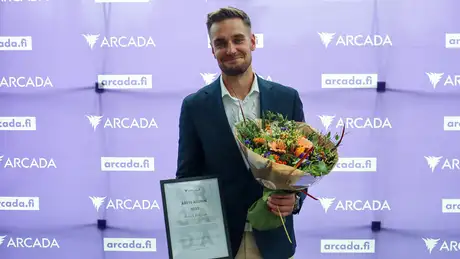Creativity and highly creative, influential people have been the focus of philosophers, thinkers, and scholars for thousands of years. Creativity is the first stage of innovation and the essence of the cultural industries.
Through a systematic literature review, this study aimed at bringing together various understandings and conceptualizations of the creativity phenomenon from several disciplines to address two gaps: one in cultural industries studies and one in creativity studies in general.
A literature review refines existing literature in a domain in order to provide an overview of the current norms and knowledge in that domain and helps to build an understanding of the theoretical concepts and terminology found in the literature. There are sequential steps to establishing a well-founded systematic literature review, and they are literature search, selection of literature, synthesizing included literature, structuring the literature review, and finally writing the review. Each of these phases consists of a variety of detailed tasks, such as finding, reading, mapping, organizing, and interpreting the results.
This research conducts a multidisciplinary systematic literature review on the phenomenon of creativity to find answers to the following questions: (1) What are the biological underpinnings of creativity? (2) What are the cognitive mechanisms at play? (3) What is the creative process? (4) What are the individual variables observed in highly creative people? (5) How do creative ideas originate? (6) What are the environmental factors fostering or inhibiting creativity?
The phenomenon of creativity plays a relatively central role in the cultural industries studies in the last century; however, it is mainly to make suggestions about creating environments to better assist the creative workforce, which forms the backbone of the cultural industries. However, scholars of cultural industries usually neglect the relevance of differences in individual and sociocultural factors. Also, creativity studies have traditionally been dominated by works written by psychologists and behavioral scientists. For this reason, many creativity scholars call for more multidisciplinary studies on the phenomenon.
Most media management students at Arcada, or at any other higher educational institution for that matter, build up assumptions on how to manage and communicate with people who work in positions that demand high levels of creativity without really understanding and appreciating their unique predispositions. This work strives to be the first-to-go study for students of communication, culture, and media or media management through which they will be able to get a comprehensive understanding of creative people’s idiosyncratic predispositions.
This research reveals that creativity is conceptualized as a combination of cognitive abilities and processes, different modes of thinking, personal variables, and various environmental factors. There are several personality traits associated with creative individuals. Based on the literature, certain individual characteristics such as willingness to take risks, openness to new experiences, and intrinsic motivation seem to play a pivotal role in the cultural industries. The research also found that creative individuals are more prone to depression or other mental disorders. This research reveals that social environments play a decisive role in creative expressions. For instance, it is generally accepted that even if the individual possesses all the internal conditions necessary for creative insights, their creative potential might never see the light of day if the external stimulating factors are absent. Therefore, environmental factors are of vital importance in the ubiquity of creative expressions.
The most fundamental takeaways of this study are that “moderation” is the most constructive approach when dealing with creativity in cultural industries and understanding that although there are many internal and external resources constructing the sources of individual differences in creative insights, the most crucial individual difference is the conscious decision to make use of these resources. Therefore, creativity should be understood as an inclination to tackle problems, an attitude toward life.


